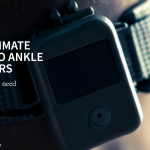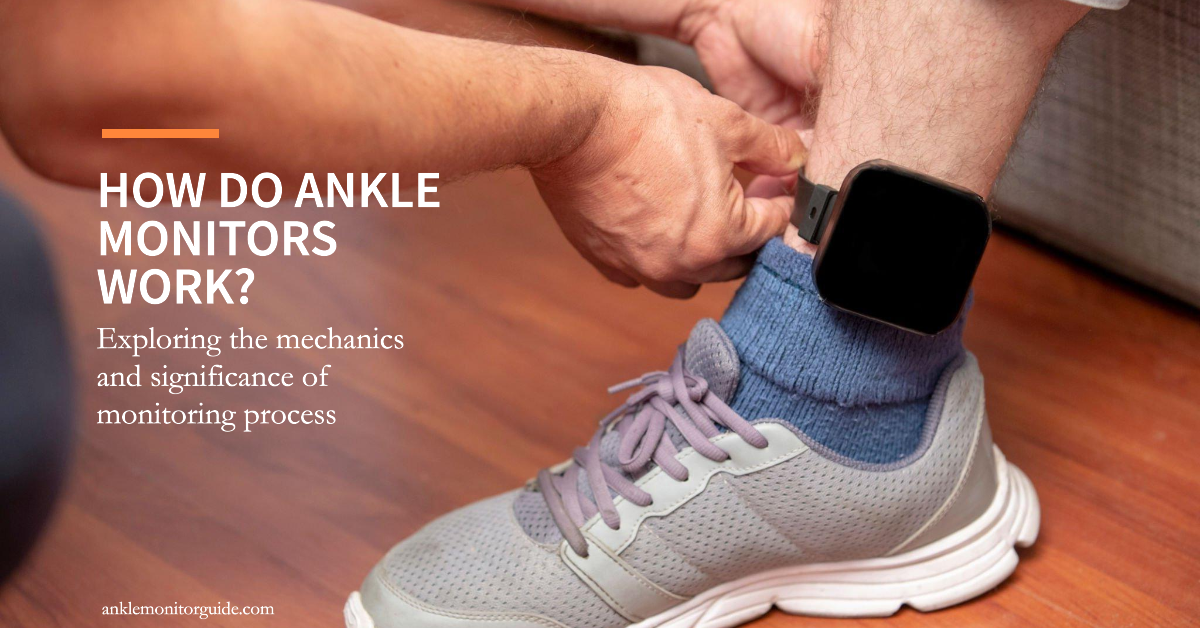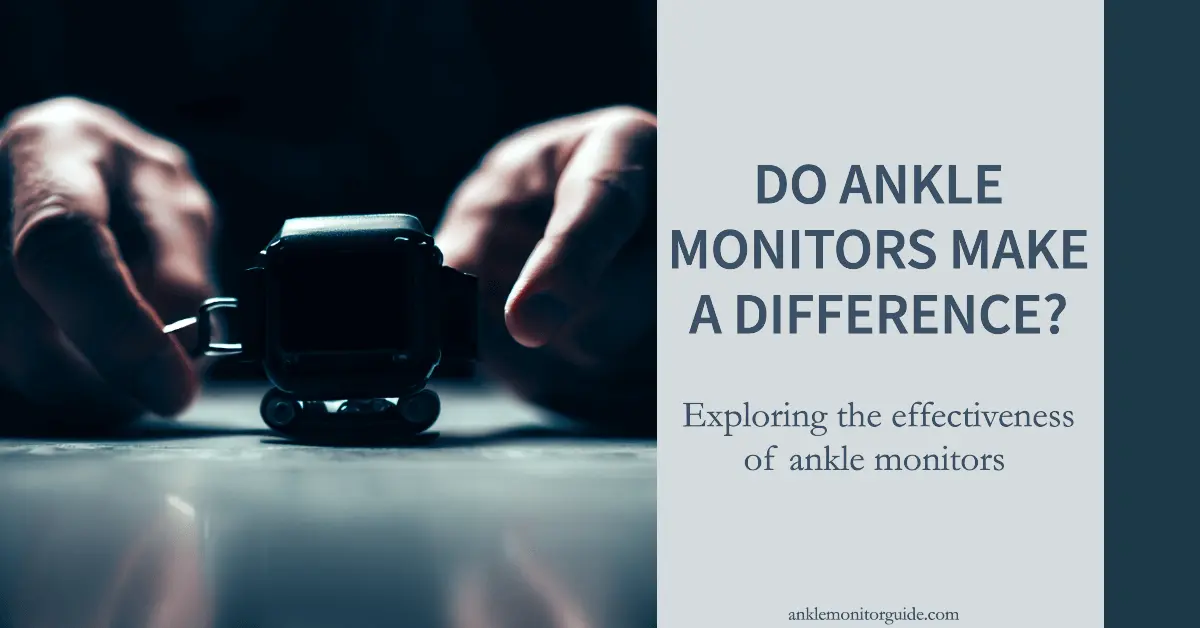The rise of technology in law enforcement has brought several monitoring tools to the forefront – creating a divide between traditional and modern methods. Traditionally, methods like parole officers and house arrest without electronic surveillance have been employed. However, in recent times, ankle monitors have emerged as a technology-driven alternative. When exploring ankle monitors vs. traditional monitoring methods, we come accross positive and negative aspects of each method.
Here’s an in-depth comparison between ankle monitors and traditional monitoring methods, highlighting their respective advantages and disadvantages. Stick around if you are wondering which of these methods work best to monitor release offenders.
Ankle Monitors: A Modern Approach to Monitoring
Ankle monitors, or electronic monitoring devices designed to be worn around the ankle, leverage technology to streamline monitoring processes. They work with GPS or radio frequency technology, mapping the locations of wearers and pacing the justice proceedings.
This continuous monitoring offers authorities precise insights into the individual’s movements.
Advantages
- Real-time Tracking: Ankle monitors leverage GPS and RF technology to track an individual’s location. This allows authorities to oversee individual movement while performing daily activities.
- Efficiency & Scalability: Electronic surveillance can monitor multiple individuals simultaneously, marking a significant step towards resource optimization.
- Non-Intrusive Rehabilitation: Ankle monitors enable law offenders to serve their sentences within society rather than an isolated correctional facility, aiding better rehabilitation.
- Cost-Effective: Ankle monitors can be more cost-effective than traditional methods. The cost of hiring parole officers or maintaining house arrest facilities can be substantial. Ankle monitors, by contrast, require only one-time installation and ongoing monitoring.
Disadvantages
- Potential for Error: Ankle monitors are not infallible. Interferences may disrupt GPS signals, causing faulty location tracking. Also, the occurrence of some technical issues can lead to false alarms or incomplete tracking data.
- Privacy Concerns: The constant monitoring associated with ankle monitors raises privacy concerns. There’s a common misconception about ankle monitors among individuals that their every move is scrutinized, which may affect their mental well-being.
- Stigma: Ankle monitors can cause potential social embarrassment for wearers despite being a rehabilitative tool.
- Limited Rehabilitation Support: While ankle monitors can track physical location, they lack the ability to provide rehabilitative support or interventions that human parole officers can offer.
Parole Officers: The Conventional Approach
Parole officers are human supervisors who provide guidance, support, and interventions. Parole officers and their hands-on approach to monitoring released offenders represent the more traditional means of managing individuals under correctional control. They maintain personal contact and can respond immediately to issues or emergencies.
Advantages
- Personalized Attention: Traditional methods like parole officers can provide a personal touch, explicitly understanding the needs and situation.
- Flexible Judgement: In contrast to rigid technological measures, human officers can decide based on the context, which is impossible with electronic tracking devices.
- Psychological & Emotional Support: Professional counseling provision and emotional support are an added advantage of this method.
- Human Interaction: Parole officers provide a vital human touch to the monitoring process. They can offer guidance, support, and interventions tailored to an individual’s needs.
- Immediate Response: Parole officers can respond immediately to any issues or emergencies, ensuring swift action in critical situations.
- Rehabilitative Programs: Human parole officers can facilitate access to rehabilitative programs, therapy, and counseling, addressing the root causes of criminal behavior.
Disadvantages
- Resource Intensive: Maintaining a sufficient count of parole officers for the increasing number of offenders can strain resources. Traditional methods often require more extensive resources, including personnel, office space, and time, making them more expensive.
- Limited Monitoring: With this method, it is nearly impossible for parole officers to monitor parolees efficiently around the clock.
- Bias & Discrimination: The potential for bias and discrimination from officers can affect the fairness of parole. Human judgment could influence monitoring decisions, potentially leading to inconsistent enforcement.
House Arrest without Electronic Surveillance: A Lenient Strategy
House arrest, as the name suggests, restricts the offender to their residence as part of their penalty. This approach doesn’t involve electronic monitoring and relies on individuals to abide by specific boundaries within their residences. It involves periodic check-ins with authorities. Here’s how it fares:
Advantages
- Reduced Penitentiary Costs: House arrest can significantly cut down on the high costs of penitentiary housing.
- Preservation of Family Ties: A house arrest preserves family ties, helping the offender reintegrate with society more easily.
Disadvantages
- Inefficient Monitoring: With no electronic surveillance, keeping track of the offender’s movements and activities grows challenging.
- Potential for Manipulation: Offenders may exploit the leniency of house arrest, making enforcement difficult.
- Intrusive Presence: House arrest with human monitoring can be intrusive, as parole officers may need to visit an individual’s residence frequently.
A Comparative Analysis
| Aspect | Ankle Monitors | Traditional Methods |
|---|---|---|
| Real-Time Tracking | ✓ Precise, continuous monitoring | ✗ Periodic check-ins |
| Cost-Effectiveness | ✓ Lower overall costs | ✗ Higher operational expenses |
| Human Interaction | ✗ Limited interaction | ✓ Personalized support |
| Immediate Response | ✗ Delayed response in emergencies | ✓ Swift action in critical situations |
| Privacy Concerns | ✗ Constant surveillance may raise privacy concerns | ✓ Potentially less intrusive presence |
| Rehabilitative Support | ✗ Limited to tracking, lacks rehabilitative programs | ✓ Facilitation of access to therapy and programs |
Making Informed Choices
In the debate between ankle monitors and traditional monitoring methods, there is no one-size-fits-all solution. The choice often depends on specific circumstances, legal requirements, and budget considerations.
- When to Choose Ankle Monitors:
Ankle monitors are often preferred when cost-effectiveness and real-time tracking are essential. They are suitable for individuals who require continuous monitoring but do not need extensive rehabilitative support.
- When to Choose Traditional Methods:
Traditional methods involving parole officers are more suitable when human interaction, immediate response, and access to rehabilitative programs are critical. They are often employed for individuals requiring personalized support and rehabilitation.
Concluding Thoughts
Each method of offender management comes with a unique set of benefits and flaws. While some might vouch for the efficiency and scalability provided by ankle monitors, others might advocate for the personalized touch offered by parole officers or the leniency in house arrest systems.
In the end, the decision should be based on the individual’s needs, legal requirements, and budget constraints. Achieving effective monitoring and rehabilitation comes from this balance between technology and humanity while maintaining the integrity of the justice system.







